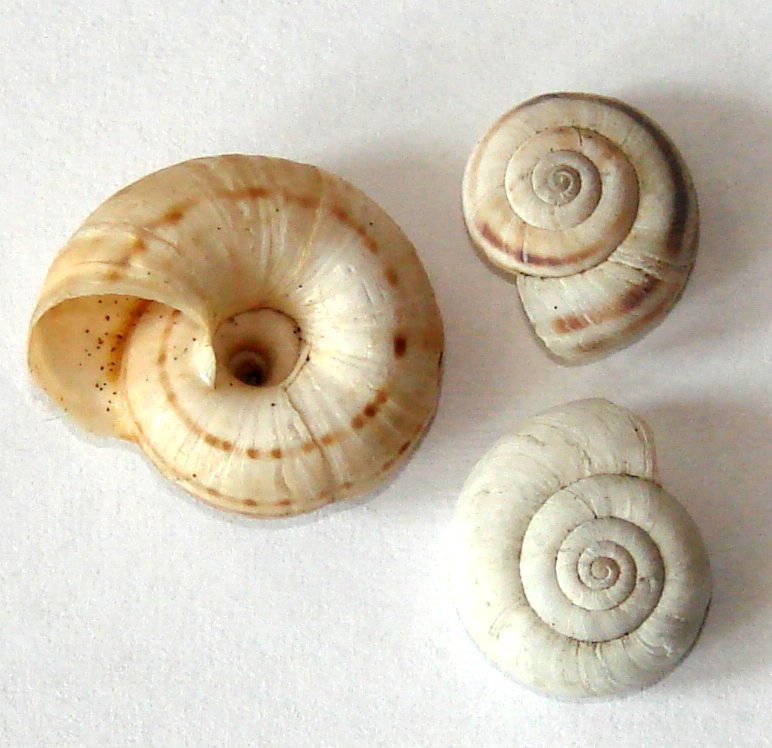Umbilicus (mollusc) on:
[Wikipedia]
[Google]
[Amazon]
 The umbilicus of a coiled
The umbilicus of a coiled
Dictionary definition
Shows the position of the umbilicus on an apple snail
{{Gastropod anatomy Mollusc shells Cephalopod zootomy
 The umbilicus of a coiled
The umbilicus of a coiled mollusc shell
The mollusc (or mollusk) shell is typically a calcareous exoskeleton which encloses, supports and protects the soft parts of an animal in the phylum Mollusca, which includes snails, clams, tusk shells, and several other classes. Not all shelled ...
is the axially aligned, hollow cone-shaped space within its whorls
A whorl ( or ) is an individual circle, oval, volution or equivalent in a whorled pattern, which consists of a spiral or multiple concentric objects (including circles, ovals and arcs).
In nature
File:Photograph and axial plane floral diagram ...
. The term ''umbilicus'' is often used in descriptions of gastropod
Gastropods (), commonly known as slugs and snails, belong to a large Taxonomy (biology), taxonomic class of invertebrates within the phylum Mollusca called Gastropoda ().
This class comprises snails and slugs from saltwater, freshwater, and fro ...
shells, i.e. it is a feature present on the ventral (or under) side of many (but not all) snail
A snail is a shelled gastropod. The name is most often applied to land snails, terrestrial molluscs, terrestrial pulmonate gastropod molluscs. However, the common name ''snail'' is also used for most of the members of the molluscan class Gas ...
shells, including some species of sea snails, land snails, and freshwater snails.
The word is also applied to the depressed central area on the planispiral coiled shells of ''Nautilus
A nautilus (; ) is any of the various species within the cephalopod family Nautilidae. This is the sole extant family of the superfamily Nautilaceae and the suborder Nautilina.
It comprises nine living species in two genera, the type genus, ty ...
'' species and fossil ammonites
Ammonoids are extinct, (typically) coiled-shelled cephalopods comprising the subclass Ammonoidea. They are more closely related to living octopuses, squid, and cuttlefish (which comprise the clade Coleoidea) than they are to nautiluses (family N ...
. (These are not gastropods, but shelled cephalopods
A cephalopod is any member of the molluscan Taxonomic rank, class Cephalopoda (Greek language, Greek plural , ; "head-feet") such as a squid, octopus, cuttlefish, or nautilus. These exclusively marine animals are characterized by bilateral symm ...
.)
In gastropods
The spirally coiled whorls of gastropod shells frequently connect to each other by their inner sides, during the natural course of its formation. This results in a more or less solid central axial pillar, known as thecolumella
Lucius Junius Moderatus Columella (, Arabic: ) was a prominent Roman writer on agriculture in the Roman Empire.
His in twelve volumes has been completely preserved and forms an important source on Roman agriculture and ancient Roman cuisin ...
. The more intimate the contact between the concave side of the whorls is, the more solid the columella becomes. On the other hand, if this connection is less intense, a hollow space inside the whorls may result, with an opening to the outside at the shell's base. This opening is known as the umbilicus.
Another way of characterizing the umbilicus in gastropods is as the hole around which the inner surface of the shell is coiled, when that space is not filled by a columella.
In species
A species () is often defined as the largest group of organisms in which any two individuals of the appropriate sexes or mating types can produce fertile offspring, typically by sexual reproduction. It is the basic unit of Taxonomy (biology), ...
with a wide, open umbilicus, such as the heath snail ('' Helicella itala''), the spiral of the whorls can be clearly viewed by looking into the umbilicus.
An umbilicus can vary from very narrow and punctured, as found in '' Petasina unidentata'', to wide and shallow, such as the deep and wide depression in the rounded snail (''Discus rotundatus
''Discus rotundatus'', common name rotund disc, is a species of small, air-breathing, land snail, a terrestrial molluscs, terrestrial pulmonate gastropod mollusk in the family Discidae, the disk snails.
Description
The shells of ''Discus rotunda ...
''). Shells with a conspicuous umbilicus are always orthostylic, i.e. they have a poorly developed columella.
Sometimes there is a dimple or funnel-shaped depression, known as the umbilical region or the umbilical field, next to or at the basal hollow of the columella, when the walls of successive whorls are not closely wound against each other.
A phaneromphalous shell has an open umbilicus. A cryptomphalous shell has the opening of the umbilicus completely plugged.
In cephalopods
References
External links
Dictionary definition
Shows the position of the umbilicus on an apple snail
{{Gastropod anatomy Mollusc shells Cephalopod zootomy